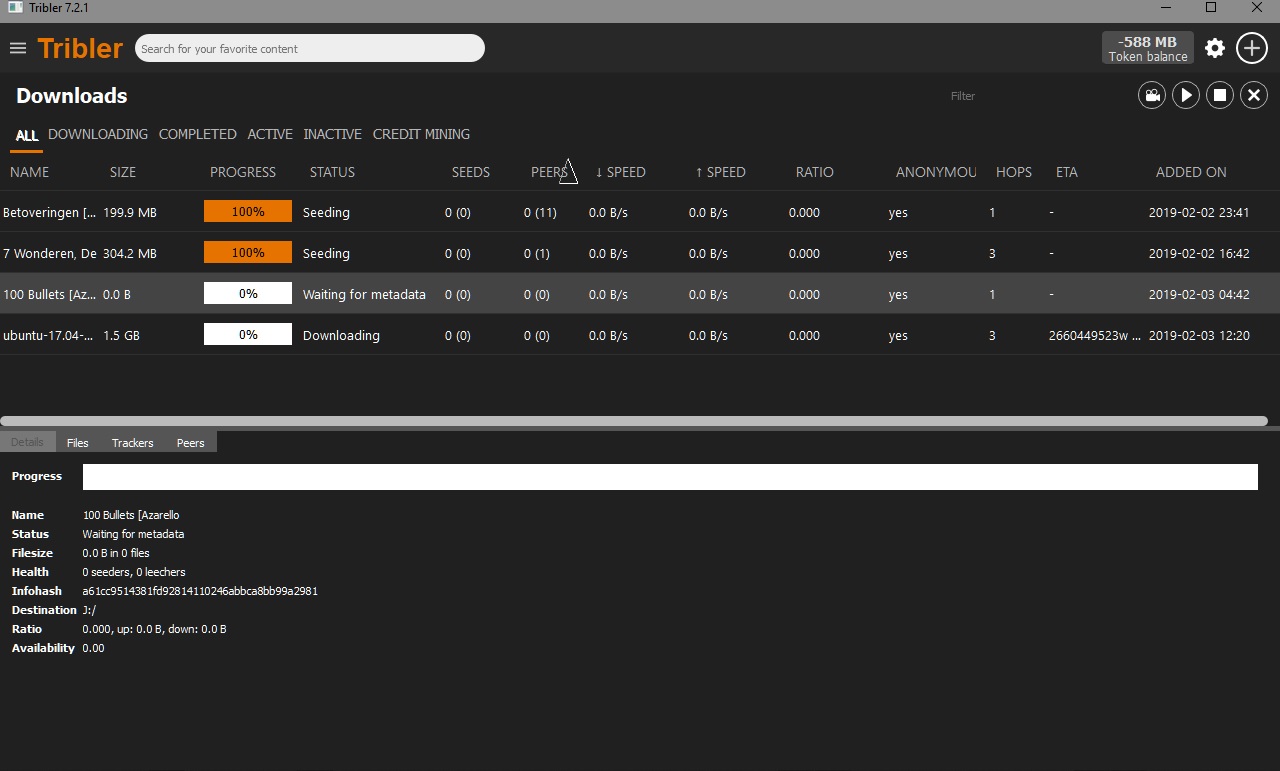
The sent packets are always encrypted depending on the type of The originator of the circuit is the only node in the circuit that initiates packet The packet is encrypted with AES and the shared secret that the recipient Circuit identifier + sender combination known, direction originator.Knows it has with the circuit identifier. Circuit identifier + sender combination known, direction endpoint.Possible packet types: EXTENDED or RELAY. Recipient knows it has with each hop in the circuit, starting from the endpoint The packet is decrypted concurrently with AES and the shared secrets that the Circuit identifier + sender combination known, first node in circuit.The packet is decrypted with AES and the shared secret that the recipient Circuit identifier + sender combination known, last node in circuit.Unencrypted packet is unreadable or not a CREATE packet. The packet is decrypted with the private key of the recipient. Circuit identifier + sender combination unknown.The circuit identifier and position of the node in the circuit: There are five different ways to decrypt an incoming packet which depend on Upstream and downstream traffic use different keys. To prevent IV reuse, IVs are constructed from a counter and a fixed part determined during key agreement. For each message, its contents are encrypted as a separate GCM stream. The packet header is unencrypted and consists only of the circuit identifier. Once this process has completed, a shared secret is agreed upon through the use of Curve25519 Elliptic Curve Diffie–Hellman.Īfter having established a shared secret, all subsequent packets will be partially encrypted using AES-GCM-128. Next, both nodes exchange CREATE/CREATED messages which are used to inform one another about their respective public keys. The detailed byte-accurate specification of our enhanced Tor-subset is as follows:Įvery time a circuit is extended with an additional node, the creator of the circuit and the node with which the circuit is to be extended randomly generate a new keypair. We use a simple Socks5 interface to talk to the circuits. Show below is the onion encryption and decryption. PING Requests a PONG for keep-alive purposes, also used for circuit breakdown detection.If a packet cannot be routed it will be sent over a direct line, the sending node acts as EXIT node. DATA Transferring data between nodes is done using the DATA packet.EXTENDED If the circuit has been extended the EXTENDED message propagates back to the origin.EXTEND When a node wants to extend its circuit it sends an EXTEND message along the circuit.CREATED When a node confirms a CREATE request it sends back a CREATED message.

CREATE Each time a node wants to create a new circuit it sends the CREATE message to the first hop.When the first hop accepts the CREATE request it sends a CREATED message back as When the originator wants to create a new circuit it sends a CREATE message to the first hop, containing the circuit id the originator assigned to this circuit. The identity of the originator can be trivially determined. Recipient of the CREATE cannot distinguish between these two cases, otherwise

In the second case the end of the circuit creates a circuitīy request of the originator, extending the original circuit. In the first case the originator initiates

Two distinct cases when a circuit is made.

The creation process is initiated by sending a CREATE message.
TRIBLER WITH TOR SOFTWARE
Weakness: we do not offer the same level of anonymity as Tor, decentralization weakens security.ĭisclaimer: Tribler is produced independently from the Tor® anonymity software and carries no guarantee from The Tor Project about quality, suitability or anything else. You help other become anonymous to get your own privacy. Our work brings the Bittorrent tit-for-tat idea to darknets. Essential part of our work is that everybody who downloads anonymously also becomes a relay. Having hop-by-hop congestion control is one of the key reasons why Tor is slow. We use UDP-based end-to-end congestion control.
TRIBLER WITH TOR CODE
We have created our own network using this Tor variant, our code is not compatible with normal Tor. Instead of the TCP protocol that Tor uses, we use the UDP protocol, in order to be able to do NAT traversal. We have implemented the main parts of the Tor wire protocol within Tribler. Tor-like onion routing and privacy protection We use self-organisation (without servers) in academically-pure P2P style. We offer Tor-like onion routing and privacy protection.


 0 kommentar(er)
0 kommentar(er)
